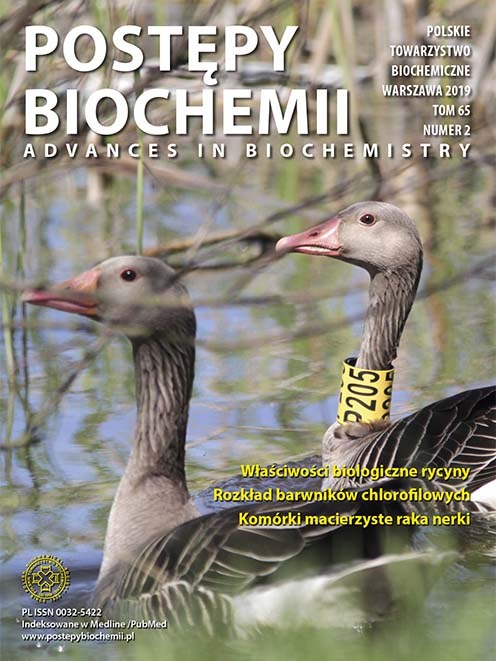Potential therapeutic application of PERK inhibitors
DOI:
https://doi.org/10.18388/pb.2019_262Abstract
Recent studies aimed at understanding the molecular mechanisms of human disease indicate that in the pathogenesis of many metabolic disorders, including inflammatory processes, aging of the organism, as well as cancer and neurodegenerative disorders, endoplasmic reticulum stress plays a significant role that is associated with the accumulation of misfolded proteins in the lumen of endoplasmic reticulum. In response to endoplasmic reticulum stress, the unfolded protein response pathway, that has a dualistic role, is induced. The unfolded protein response can restore endoplasmic reticulum homeostasis by degradation of unfolded proteins, inhibition of translation, and mobilization of chaperons, but it can also promote apoptosis when endoplasmic reticulum stress is prolonged. The unfolded protein response signaling pathways may be activated via three transmembrane receptors such as: PERK, IRE1 and ATF6. The most promising for development of new therapies of many human diseases, in particular cancer and neurodegeneration is PERK pathway, that inhibition shows positive therapeutic effects both in in vitro and in vivo studies.
Downloads
Published
Issue
Section
License
All journal contents are distributed under the Creative Commons Attribution-ShareAlike 4.0 International (CC BY-SA 4.0) license. Everybody may use the content following terms: Attribution — You must give appropriate credit, provide a link to the license, and indicate if changes were made, ShareAlike — If you remix, transform, or build upon the material, you must distribute your contributions under the same license as the original. There are no additional restrictions — You may not apply legal terms or technological measures that legally restrict others from doing anything the license permits.
Copyright for all published papers © stays with the authors.
Copyright for the journal: © Polish Biochemical Society.




